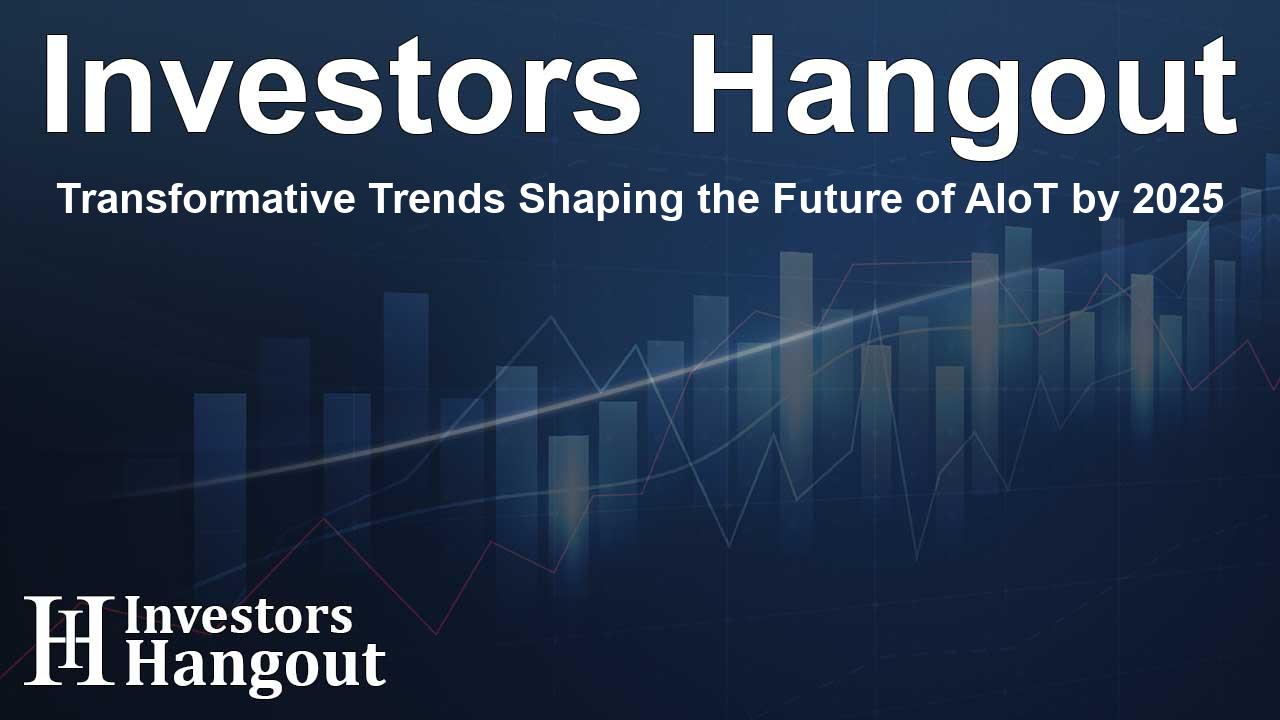Transformative Trends Shaping the Future of AIoT by 2025

Emerging Trends in AIoT for a Smarter Future
As technology continues to evolve, the AIoT (AI-powered Internet of Things) landscape is transforming not just security but various industries. Companies like Hikvision are at the forefront of this revolution, paving the way for innovations that foster efficiency, security, and sustainability. In this article, we will delve into five key trends shaping the AIoT industry and their implications for the future.
1. Adaptive Perception Technologies
Perception technologies are rapidly adapting to meet diverse needs across various environments. For instance, AI Image Signal Processing (AI-ISP) technology has drastically improved image quality in low-light situations, effectively tackling issues like image noise and motion blur.
Additionally, millimeter-wave radars are emerging as essential tools, capable of seeing through smoke, dust, and other obstructions to deliver accurate speed and direction metrics, especially useful in traffic management. In highly challenging industrial environments, sound wave sensing technologies are paving the way for non-invasive equipment monitoring, enabling early fault detection and minimizing operational downtime.
2. AIoT Accelerating Digital Transformation
The AIoT landscape is essential for driving digital transformation across diverse industries. In retail, for instance, businesses are leveraging AIoT technologies to improve operational efficiency, gain critical insights into inventory tracking, and monitor foot traffic patterns. These insights help retailers maintain competitiveness while effectively preventing loss.
On the other hand, industries such as energy prioritize safety. AIoT innovations, like automated personal protective equipment (PPE) checks, streamline safety gear inspections, minimizing reliance on manual oversight and significantly enhancing workplace safety.
With advancements in large vision, audio, and fiber-optic technologies, organizations are now relying on industry-specific designs and algorithms optimized for unique requirements, facilitating practical and effective AIoT applications.
3. Move Toward Open Ecosystems
The increasing demand for customized AIoT solutions necessitates collaborative approaches among solution providers. The reality is, no single entity can fulfill all user needs independently; hence, the emergence of open platforms and tools has become crucial in integrating third-party applications.
This collaborative environment fosters the development of flexible and effective AIoT solutions. Now, easy-to-use AI training platforms allow integrators, regardless of their technical backgrounds, to train and deploy custom AI models effectively, leading to accelerated digital transformation.
4. Proactive Cybersecurity Measures
In a landscape growing rapidly with AIoT solutions, cybersecurity has become paramount. Organizations are increasingly adopting proactive cyber defense strategies that emphasize swift threat detection and response capabilities.
This trend advocates teamwork among system integrators, installers, and customers to ensure the secure implementation and usage of AIoT technologies. Such collaboration enhances resilience and fosters trust, ultimately leading to a robust operational framework.
5. AIoT as a Driver for Sustainability
With an emphasis on sustainability becoming crucial, companies worldwide are turning to AIoT technologies to create more eco-friendly operations. The integration of connected sensors with AI algorithms enables organizations to optimize resource utilization, decrease energy consumption, and improve waste management.
For instance, AIoT systems in building management are capable of automatically adjusting energy consumption based on real-time occupancy and environmental conditions, resulting in significant cost savings and reduced carbon footprints.
Conclusion
To summarize, the trends in AIoT are not just reshaping industries; they are leading us towards a more efficient and sustainable future. As companies explore innovative applications and practices, those who leverage these advancements will likely dominate their respective sectors.
Frequently Asked Questions
What is AIoT?
AIoT stands for AI-powered Internet of Things, which integrates artificial intelligence with IoT devices to enhance operational efficiency.
How are perception technologies evolving?
Perception technologies are adapting to various environmental conditions, improving image quality, motion detection, and monitoring capabilities in diverse sectors.
Why is digital transformation important in industries?
Digital transformation streamlines operations, optimizes resource management, and enhances competitiveness, particularly crucial in retail and energy sectors.
What role does cybersecurity play in AIoT?
Cybersecurity ensures the protection of digital assets in AIoT systems, focusing on proactive measures for threat detection and response.
How can AIoT contribute to sustainability?
AIoT helps organizations optimize resource use, reduce energy consumption, and enhance waste management, paving the way for eco-friendly operations.
About The Author
Contact Owen Jenkins privately here. Or send an email with ATTN: Owen Jenkins as the subject to contact@investorshangout.com.
About Investors Hangout
Investors Hangout is a leading online stock forum for financial discussion and learning, offering a wide range of free tools and resources. It draws in traders of all levels, who exchange market knowledge, investigate trading tactics, and keep an eye on industry developments in real time. Featuring financial articles, stock message boards, quotes, charts, company profiles, and live news updates. Through cooperative learning and a wealth of informational resources, it helps users from novices creating their first portfolios to experts honing their techniques. Join Investors Hangout today: https://investorshangout.com/
The content of this article is based on factual, publicly available information and does not represent legal, financial, or investment advice. Investors Hangout does not offer financial advice, and the author is not a licensed financial advisor. Consult a qualified advisor before making any financial or investment decisions based on this article. This article should not be considered advice to purchase, sell, or hold any securities or other investments. If any of the material provided here is inaccurate, please contact us for corrections.
